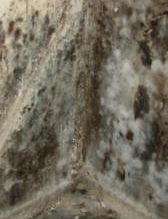Those with strong health, wellness, and safety programs bested S&P 500 average rate of return in investment simulations
Companies that build a culture of health by focusing on the well-being and safety of their workforce may yield greater value for their investors, according to a study published in the September issue of the Journal of Occupational and Environmental Medicine (JOEM), official publication of the American College of Occupational and Environmental Medicine (ACOEM).
 |
| Healthy and safe employees are good for business, researchers say. |
Tracking an initial theoretical investment of $10,000 in publicly traded CHAA-recipients from the mid 1990s to 2012, researchers found that these award-winning CHAA companies outperformed the S&P 500.
Four investment scenarios were created, using a combination of simulations and past market-performance to create investor portfolios for comparison. While the margin of return varied, CHAA recipients outperformed the market in each of the four scenarios.
In the highest-performing scenario, CHAA companies had an annualized return of 5.23% vs. −0.06% for the S&P 500. In the lowest-performing scenario, CHAA companies had an annualized return of 6.03% vs. 2.92% for the S&P 500.
“Our results strongly support the view that focusing on health and safety of a workforce is good business,” said the study authors. “Engaging in a comprehensive effort to promote wellness, reduce the health risks of a workforce, and mitigate the complications of chronic illness within these populations can produce remarkable impacts on health care costs, productivity and performance.”
The authors acknowledge that the study focuses on the performance of a small collection of companies on the stock market for a limited number of years, and that more research is needed before a strong causal relationship can be established between health and safety programs and market results.
But they conclude that the study adds new evidence-based data to a growing body of literature indicating that “healthy workforces provide a competitive financial advantage in the marketplace.”
Source: American College of Occupational and Environmental Medicine, Lab Manager
Create healthier indoor environments with air purifiers
Breathing in contaminated air for prolonged periods of time can affect the respiratory tract, cardiovascular and other parts of the human body. Unfortunately, the air in many offices and workplaces contains toxic chemicals, particles, biological contaminants and irritating odors.
Electrocorp has designed highly functional and portable air filtration systems for commercial and industrial applications, which can provide cleaner and healthier air at the workplace.
Examples of Electrocorp's areas of expertise:
- Hospitals and healthcare (clinics, doctor's offices, waiting rooms, etc)
- Offices and office printers
- Law enforcement (police departments, evidence rooms)
- Schools and universities
- Art restoration
- Hair salons and spas
- Museums and libraries
- Chemical and odor control
The air cleaners feature many pounds of activated carbon (activated charcoal) for airborne chemicals and gases, HEPA filters for particulate matter and optional UV germicidal filtration.
For more information or a consultation with an IAQ expert, contact Electrocorp.


























